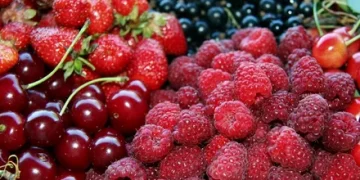Russian scientists have begun to create nomenclature standards for domestic varieties of cherries, red currants and tangerines. At the end of July, raspberry plant material was collected at the Federal Center for Horticulture in Moscow, which will also be used to develop such standards.
In an ordinary raspberry bush, biologists see not only a juicy berry, but, above all, the genetic characteristics of a particular variety and its nomenclature standard. The nomenclature standard is a kind of security certificate of a variety, with its help, the authors of the varieties are insured against fakes, and consumers can be sure of the quality of the berries. This year, experts have collected plant material for the preparation of nomenclature standards for raspberries, tangerines, currants, cherries, gooseberries and apricots. The “harvest” turned out to be good – a total of 37 samples.
The work is supported by the Russian Ministry of Education and Science under the project “National Network Collection of Plant Genetic Resources for Effective Scientific and Technological Development of the Russian Federation in the Field of Genetic Technologies”. Breeding material is collected by scientists from several scientific institutes in Russia at once. The process is coordinated by the All-Russian Institute of Plant Genetic Resources (VIR) named after V.I. N.I. Vavilov (St. Petersburg). The All-Russian Research Institute of Fruit Crops Breeding (Orel), the Subtropical Scientific Center of the Russian Academy of Sciences (Sochi), the Federal Scientific Breeding and Technological Center for Horticulture and Nursery (Moscow), the Federal Scientific Center (FNTs) named after. I.V. Michurin, North Caucasian Federal Scientific Center for Horticulture, Viticulture, Winemaking (Krasnodar, Michurinsk).
“Together with colleagues, we collected and photographed samples of several domestic varieties of apple, black currant, red currant, gooseberry, cherry, tangerine and apricot in different phases of plant development, in particular, flowering and fruiting. We took flowers, fruits and annual shoots typical for this variety, since our task is to create standards of these varieties that will be stored forever and can be used at any time to identify the variety, ”said the leading researcher at VIR im. N.I. Vavilova Larisa Bagmet.
After drying and mounting, all plant material is issued in the form of herbarium specimens, each of which will be certified by the author or custodian of the collection and stored as a nomenclature variety standard with subsequent registration in the VIR Herbarium database.
“However, the nomenclature standard will become more popular after the genetic certification of the variety. Therefore, at the same time, a molecular genetic study of the collected material is underway: a description of economically valuable traits and the creation of genetic passports for these varieties. The first nomenclature standards for agricultural crops were created in 2019 using the example of potatoes, apple trees and black currants of domestic selection. Together with our colleagues, we continue this systematic work on other cultures: the bioeconomy of the future requires a combination of the best traditions of Russian scientific schools with new high-tech approaches to working with genetic resources. Otherwise, it is simply impossible to use them effectively either to create innovative products with full certification up to the origin of raw materials, or to confirm the authenticity of plant varieties in disputable cases,” emphasized the Deputy Director of VIR named after V.I. N.I. Vavilova Yulia Ukhatova.
Recall that within the framework of the Federal Program for the Development of Genetic Technologies in 2019-2027. systematic work is underway to develop bioresource collections. To date, 250 collections of genetic resources (plants, animals, industrial and agricultural microorganisms, etc.) have been registered in Russia. For the effective and rational use of collections in the interests of implementing the Strategy for the Scientific and Technological Development of Russia, an active network work of scientific institutions – holders of collections under the auspices of the created bioresource centers was initiated. The first such center, the National Center for Plant Genetic Resources, was established on the basis of VIR named after V.I. N.I. Vavilov by decree of the President of the Russian Federation of February 8, 2022. The Center methodically united more than 20 organizations and institutions.
































